There is no better way to grow the most beautiful and productive tomato plants around than by starting your own tomato plants indoors from seed!
Growing your own plants from seed is so easy! All it takes is a little bit of space, a few simple materials and a bit of patience – and before you know it, you will have your very own tomato plants growing healthy and strong and ready for transplanting in late spring!
Growing tomatoes from seed is also a great way to get some soil on your hands in the middle of a cold and dreary winter. For many gardeners, the winter months are that slow time of year when they are just itching to get their gardens started. So why not bring your gardening indoors by starting your tomato seeds?
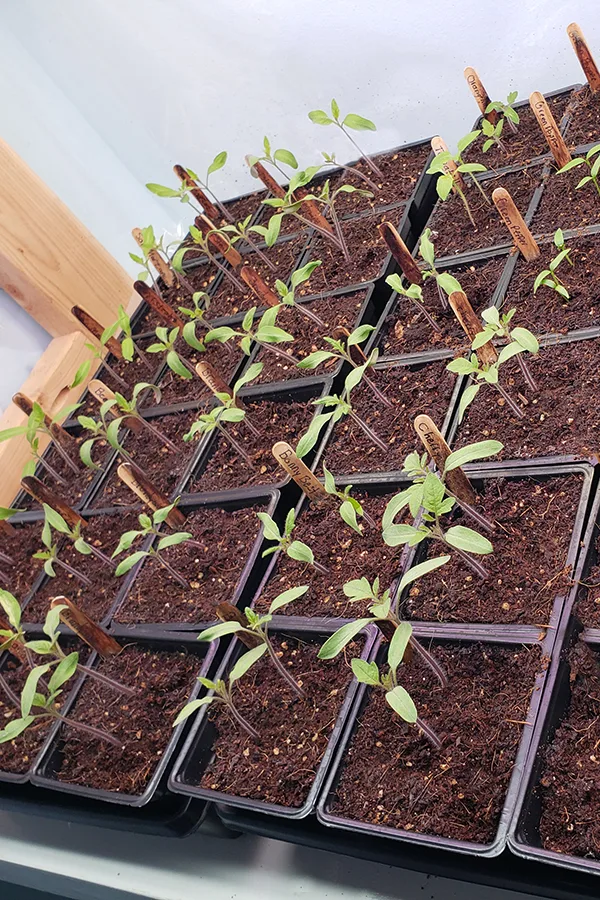
There is just something so rewarding about turning a tiny seed into a thriving and producing mature tomato plant. Watching it grow. Watching it flower. And then seeing the first small fruits form on its stems and slowly turn into delicious fruits!
Advantages To Starting Tomatoes Seeds Indoors
Beyond the satisfaction of growing your own plants, there are lot of great reasons that starting your own plants make so much sense.
First, it really is one of the best ways to save money on your gardening budget. You can usually purchase an entire pack of seeds for cheaper than you can purchase one transplant from a local garden center. And most likely, you will end up with more seed than you need, allowing you to save them for the following year.
It is also great for saving seeds from a favorite heirloom tomato variety that grows in your garden. Simply save the seeds from those tomatoes to grow the same plants again the following growing season. It eliminates ever having to buy seeds again. (For more on that, be sure to check out “How To Save Tomato Seeds From Tomatoes.”)
Another great advantage of starting your own tomato plants from seeds is that you have freedom of choice. What does that mean? Basically, when you shop at garden centers, you are limited to only the tomato varieties the center or nursery sells.
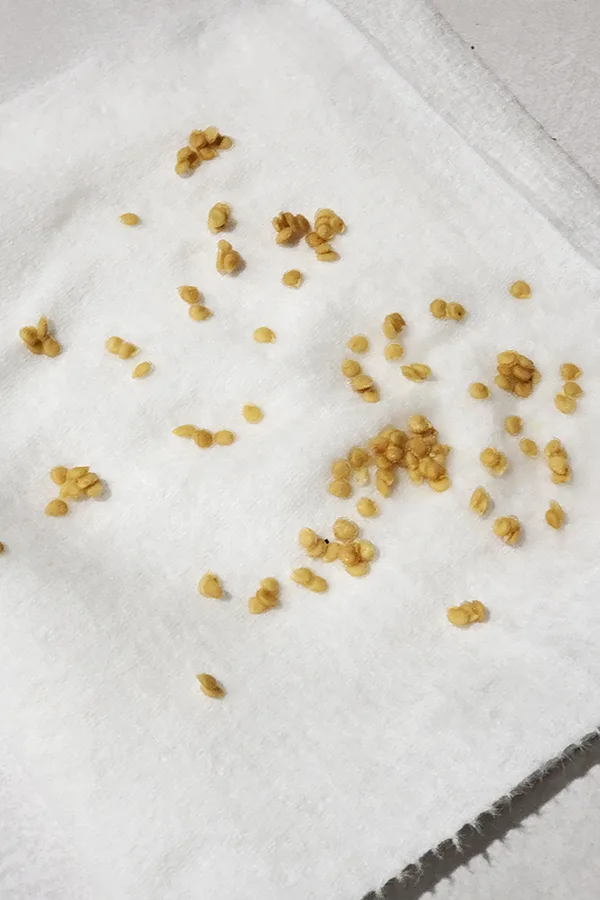
But have you ever taken the chance to browse through a seed catalog or online seed store? There are so many different varieties of tomatoes out there just waiting to be tried – all with their own unique size, shape and flavor.
When you purchase seeds as opposed to transplants, you have the freedom to grow whichever variety your heart desires! Want to try Black Brandywine tomatoes? You got it. What about Cherokee Purple tomatoes? Sure thing! Maybe you’re more of a Golden Jubilee tomato fan? The varieties are almost endless when it comes to growing tomatoes from seeds!
Starting Tomato Seeds Indoors
Getting The Right Supplies
Thankfully, you don’t need a lot of expensive supplies to start tomato seeds indoors. But it all starts with having good seeds and a proper container to grow your plants in.
There are many different options that work great for seed starting containers. You can go with traditional seed starting trays, aiming for trays that hold around 24 to 36 cells. You can also use all those extra grow pots you have left over from repotting your houseplants. Another alternative is using compostable pots like empty toilet paper rolls or peat pots.
You will also need a source of light. Before you go out and spend a lot of money on lights that are specifically labeled as “grow lights” remember this: you don’t need special lights to grow seeds indoors!
Basic fluorescent or LED shop lights work just fine for germinating and growing seedlings indoors. Not only are they easy to find at most home improvement stores, they are also a lot cheaper than grow lights.
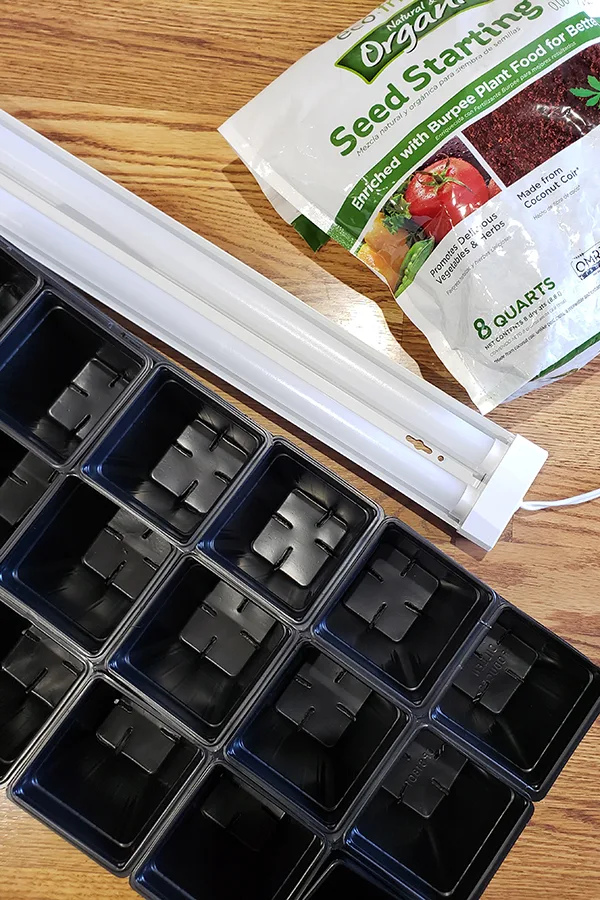
You can use either a DIY Tabletop Seed Starting Stand or you can prop your lights up on a few bricks. The only requirement you need is to be able to move the lights up as they grow to keep the plants strong and full.
All that is left to have on hand is high-quality seed starting soil. You can purchase soil mixes at most garden centers or home improvement stores, or you can make your own. Just make sure that the mixture is light, fertile, and drains efficiently.
The Right Timing
One of the most important things when it comes to starting tomato seeds indoors is the timing. Start your seeds too early and they might outgrow their containers before you can get the plants in the ground. Start them too late and your tomatoes might not have enough time to produce fruit before adverse weather hits.
The timing depends on your location and your Last Spring Frost Date (LSFD). While it isn’t a fool-proof date, it will give you the best chance at success with starting seeds indoors. You will need to plant the seeds in the containers several weeks before your LSFD.
You should be able to find the timeline for starting seeds indoors printed on the back of most seed packets. If you can’t find that information or you saved the seeds yourself, a good rule of thumb is to start your tomato seeds around 8 to 10 weeks before your LSFD.
Starting The Seeds
Fill your containers with your seed starting soil. Ensure that the soil is moist but not overly saturated. Leave about a half-inch at the top of the container. Add a couple of seeds to each container.
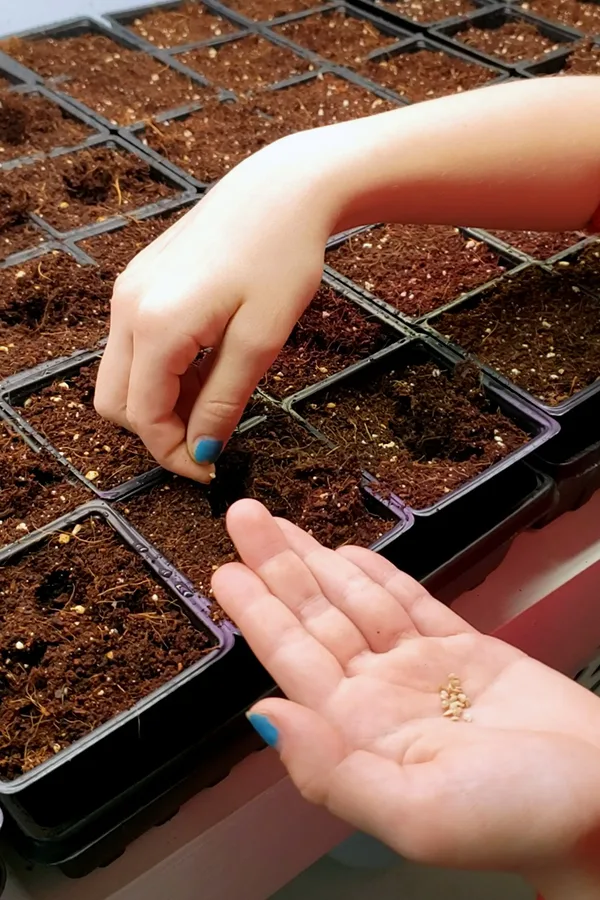
The number of seeds you add will depend on the size of your container. It’s always good to use a few more seeds and then thin them after they have germinated.
Lightly cover the seeds with additional soil. Spritz the soil with water to help set the seeds and kick start germination. For best results, cover the containers with clear plastic trays or plastic wrap to help retain moisture. Keep the soil moistened but not saturated. At this point, the seeds do not need to have light to germinate.
Seedling Maintenance
Seeds should germinate in around 6 to 8 days. As soon as you see some of the seeds germinate, take off the plastic cover and turn on your lights. Keep the lights only an inch or two above the seedlings. This will keep the plants from getting leggy trying to reach up for far away light.
After the seedlings are a few inches tall, thin them so you only have one to two plants per container. Keep the soil moist and continue to raise the lights as the plants grow.
When you are about two weeks out from planting outdoors, start to set the seedling containers outside in a protected space away from strong winds. Bring them back inside during the night and if the weather drops or becomes worse.
This process is called “hardening off” and will help to toughen up your plants before transplanting them into your garden space. Gradually increase their time outside until they you are able to leave them outside 24/7.
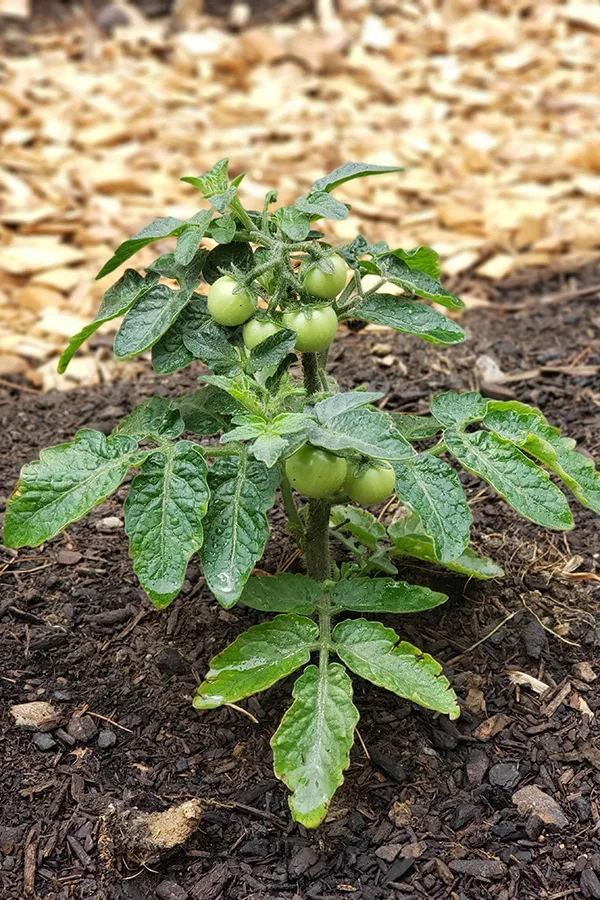
Finally, as soon as the chance for frost is gone and the soil has warmed up, it’s time to get those plants into your garden. Plant them just like you would any transplant you purchased from a garden center. All that is left is to sit back and watch your seedlings grow!
Follow Our Facebook Page For Even More Great Tips! Simple Garden Life Facebook Page
Simple Garden Life is a website dedicated to keeping gardening fun, simple and enjoyable! We publish two new articles each week along with a new garden podcast episode every two weeks. This article may contain affiliate links.
